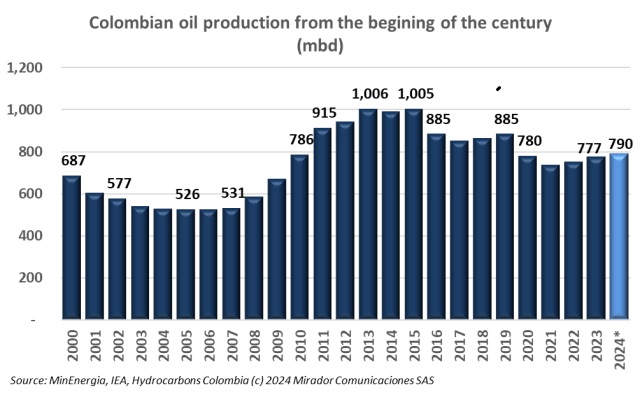The Territorial Renewal Agency (ART) made public the Project Bank eligible for funding through the Works for Taxes mechanism, offering options such as the Trust Option and Agreement.
In a letter addressed to President Gustavo Petro, the Intergremial Chamber of Transportation (Unidos) expressed its stance regarding the rise in prices.

In its latest analysis and forecasts of the oil sector, with data up to March 2024, the International Energy Agency (IEA) anticipates that Colombia’s oil production will stay relatively stable in 2024 compared to 2023 figures.
Surtidora de Gas del Caribe S.A. E.S.P. (Surtigas) reported its 2023 operational and financial results.
GeoPark (NYSE: GPRK) was recognized at the Schneider Electric Sustainability Impact Awards for its outstanding contributions to environmental sustainability.
As Colombia grapples with economic slowdown across key sectors like industry, commerce, and construction, attention turns to its low investment levels, particularly in private capital.

Promigas delivered outstanding results across all its business lines throughout 2023.
The National Business Council (CGN) expressed concerns about Decree 044 of 2024, issued at the end of January, which “establishes criteria for declaring and delimiting temporary reserves of natural resources within the framework of mining-environmental planning.”
Rodrigo Negrete, Director of the Environmental Licenses Agency (ANLA), announced that the government is preparing a legislative proposal that could change the environmental licensing process in the country.
In a recent statement, Finance Minister (MinHacienda) Ricardo Bonilla addressed the potential unilateral increase in diesel prices and ongoing dialogues with the transporters’ association.